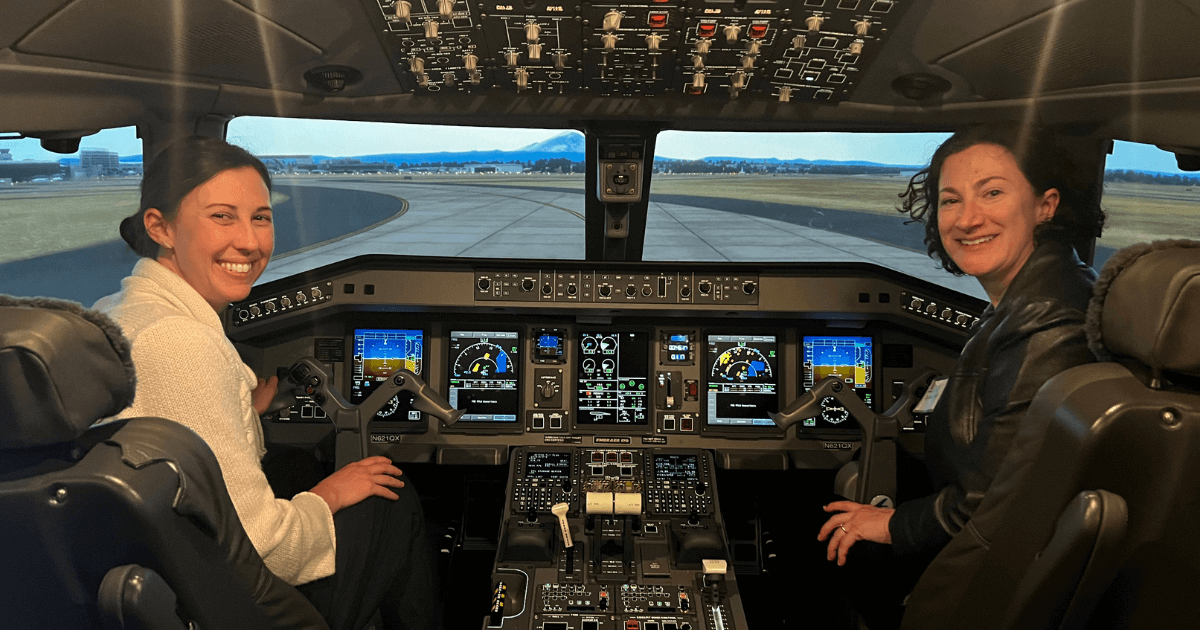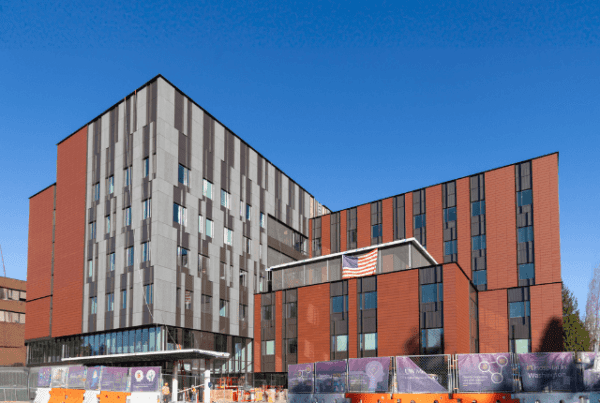Highlights | Trainee education takes flight
- All transportation methods come with risks, but flying has been one of the safest modes of travel for decades.
- Service sectors, including healthcare, can learn a lot from the aviation industry’s long-term success.
- UW School of Medicine trainees met with Horizon Air to discuss aviation industry safety protocols and create takeaways for leading their own teams.
- The UW Medicine Office of Graduate Medical Education wrote this story inspired by the positive feedback from trainees and faculty who participated in the experience.
The airport can be an exciting place. It signals the start of a trip, maybe getting to see family and friends or the chance to explore somewhere new. As you zip around the country on a commercial airliner, you might eagerly await the snack and beverage cart for a little treat to accompany your in-flight movie or look forward to the chance to put your phone on airplane mode and take a break.
What you probably won’t dwell on is the fact that you are hurtling through the atmosphere six miles above the earth at three-quarters the speed of sound.
Although recent aviation incidents may make this feel more top of mind, commercial aviation is considered incomparably safe, with the last fatal crash involving a U.S. airline (Colgan Air Flight 3407) occurring nearly 15 years ago, despite air travel increasing. Internationally, commercial plane accidents have also drastically decreased over the last 10 years, according to the International Air Transport Association.
The healthcare sector has looked to aviation as a model for improving safety advancement for years. As a high-reliability industry — a high-risk and high-complexity operation with rare failures far below statistical expectations — how has the commercial aviation industry achieved this status and what can we learn from it?
A group of UW School of Medicine trainees went to find out.
Lessons from the flight deck
The UW Housestaff Quality & Safety Committee (HQSC) and Horizon Air, a part of Alaska Air Group, teamed up to organize a half-day experiential exchange. During the session, residents and fellows had the opportunity to learn and apply key aviation safety concepts alongside Horizon Air flight crews at the Horizon SeaTac training base.
Here are their top learnings and clinical takeaways.
Team resource management
Trainees were oriented to classic principles of aviation crew resource management:
- Clear division of labor and understanding of the team’s roles.
- Closed-looped communication with verbal feedback to confirm understanding between the communicator and receiver.
- Prioritizing psychological safety to empower all team members to raise concerns regardless of their position in the organizational hierarchy.
The implementation of these practices produced a sea of change in aviation safety in the 80s.
More recent additions to crew resource management policy in aviation include what is called the sterile cockpit rule, forbidding distracting conversations during critical tasks.
Trainees were able to see these tenets applied in action aboard a high-fidelity Embraer 175 simulator as two Horizon training captains demonstrated an in-flight engine failure and a safe emergency landing.
Clinical takeaways:
“While crew resource management practices are already used for clinical emergencies such as a code blue (cardiac or respiratory arrest), there is room to expand their application into other settings. For instance, the sterile cockpit rule could be applied during key portions of invasive procedures,” says Chen Wu, MD, faculty director, UW Housestaff Quality & Safety Committee.
“In medicine, we care for patients who are anxious and, in many ways, scared. The airline industry transports passengers who have similar emotions. We both have to provide quality and safety and CARE! And, we both have to use the concepts of crew resource management to get the work done in an exceptional manner. We both use simulation to teach and train skills in a way that is non-judgmental but corrective and supportive,” says Byron Joyner, MD, vice dean of Graduate Medical Education.
Procedure checklists
In addition to observing Horizon training pilots carry out normal and emergency procedures in the flight simulator, participants donned virtual reality headsets and stepped into a three-dimensional copy of the Embraer 175 flight deck to start the engines and complete other actions by following the manufacturer checklist. The checklist ensures critical steps are performed correctly each and every time.
Clinical takeaways:
“While checklists have made their way into many facets of clinical care already, only a fraction of these are in the ideal challenge-response format, meaning action verification. For example, when rounding on patients, one team member might call out important medications while another verifies and announces that they have indeed been ordered as intended,” says Wu.
“One setting where the challenge-response format is already well-established is during the start of every operation across our UW Medicine training hospitals,” says Joyner.
“I presented some of what I gleaned from the afternoon to our pediatric urology group in our weekly conference to discuss ways to incorporate innovation to both create and sustain a culture of safety,” says Hailey Silverii, MD, fellow, Pediatric Urology.
Mindfulness and self-care practices
Like many service industries, including healthcare, airlines were hard-hit by the pandemic and continue to grapple with its lingering consequences such as burnout, short staffing and customer volatility. The Horizon Air trainers emphasized the impacts meditation and a full-day staff retreat have had on boosting employee well-being.
Clinical takeaways:
“Incorporating mindfulness or meditation into naturally occurring opportunities, such as the last few minutes of a learning conference, is a way to start seamlessly integrating wellness into your day. Short, intentional moments can make many tiny efforts add up to a big impact on mental health,” says Wu.
“My colleagues and I learned a lot from this experience and the lessons learned could not be more relevant to both our clinical practice as well as our lives outside of medicine,” says Sean McCue, MD, resident, Anesthesiology & Pain Medicine.
Reaching new industry heights
Providing safe, reliable service is a shared value in both healthcare and commercial aviation. Continuing professional education can take many forms, and sometimes a new (aerial) point of view can spark innovation and ideas.
“We extend our heartfelt thanks to Horizon Air for their incredible hospitality and partnership,” says Wu. “For the residents, fellows and faculty in attendance, this was a unique and wonderful experience. The passion exuded from our newest generations of physicians for safe and reliable patient care will propel our profession to ever loftier heights.”



